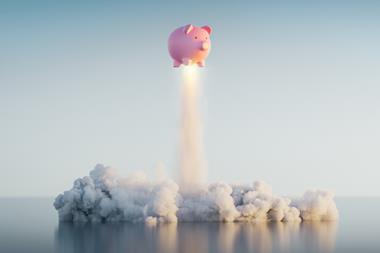As the twin towers of the World Trade Centre (WTC) collapsed, devastating lives and property, they also destroyed all previous assumptions about the risks associated with skyscrapers.
The towers were built to withstand considerable impacts, as well as fires. Yet the idea of a huge impact, followed by an explosion, was beyond the worst catastrophes imagined by designers and engineers.
Last week, the Royal Institute of British Architects (RIBA) called for industry experts to get together and work out exactly what happened to make the twin towers collapse.
The bad news is that it is probably not possible to modify existing buildings, or those under construction, against the brutality of attacks like those in Manhattan. Foundations will only support a limited load and adding significant structural strength is impractical and expensive.
But the good news is that many other buildings, including some of London's most prominent towers, may fare better than the WTC in the event of such a disaster.
Changing world
In the short term, insurers can protect themselves by adding terrorist exclusions where necessary to any policies covering tall buildings. Over the medium term, insurers and risk managers will need to look at any ways likely to cut the risk of disaster. In the long term, however, city skylines could change if companies decide to avoid high-rise offices.
A leading analyst says: “Events over the next two or three months will indicate the reality of the risk – depending on the success of any Western action against the terrorists that may help to keep price rises down. Premiums have been rising for the past 18 months and it's inevitable that they will rise further.
“The attacks indicate safety mechanisms may need to be reviewed and owners may need to invest in more rigorous safety mechanisms.”
Managing director of fire and risk sciences for the Building Research Establishment, Jeremy Hodge, says risk managers are tackling evacuation problems. “For medium to tall buildings, we talk about phased evacuation. In a normal fire, that will be adequate. The problem in the case of the WTC was the collapse and that's something we'll be looking at,” he says.
“Buildings have been designed to withstand impact but, in this case, it was an impact followed by a huge fire.”
The collapse of the twin towers was largely due to their design. Asked to come up with a building with ten million square feet of office space, WTC architect Minoru Yamasaki considered more than 100 different designs before settling on the twin towers, each 110 storeys high. Making them so tall and slender maximised the size of the plaza at their base, but they also needed to be rigid. His solution was to make the buildings like tubes of thin steel columns, with floor trusses attached to a central core. The columns were just 18.7 inches wide and 22 inches apart. At the top of the building were wind-damping weights to help prevent swaying.
When the towers were hit by the hijacked aircraft, much of the fire protection would have been blasted off the columns, exposing the steel to temperatures high enough to melt the metal.
Hodge says: “A normal fire starts slowly and builds up. This case had 10,000 gallons of aviation fuel. A fuel fire is very much more severe than a normal wood and plastics one. Had there been no fire after the impact, the buildings would not have collapsed, in my view.”
Hodge says Tower 42, the City's tallest building, and Canary Wharf, the tallest in London, both spread their strength more evenly through their structures, suggesting they would perhaps survive better under similar conditions.
Price of protecting people
Hodge relates an industry rule of thumb – a ratio of 1:5:200 describes the cost of erecting a building to the running costs over its lifetime to the value of the businesses and staff inside. That suggests skyscrapers are cheap boxes relative to their human contents and makes clear the scope for investing in protection.
But technical director of loss adjusters and risk consultants Resolve International, Richard Radevsky, warns that engineers' ability to build in protection will always lag behind the terrorists. “Whatever protection you put up, terrorists will find a way around it,” he says.
He has studied the devastation of Sri Lanka's World Trade Centre by a terrorist bomb in October 1997 and the attack by a rocket-propelled grenade on the Ceylinco building, also in Sri Lanka's capital Colombo. He says every type of terrorist attack has its own peculiarities.
“Companies are mainly concerned about protecting people, rather than buildings, and there are things people can do to encourage safety. The building's structure can be used to shelter staff, as was done in the main CU building.”
The former CU tower, bombed by the IRA in 1992, was rebuilt with shatter-resistant glass and a protective concrete core.
In the long term, companies may consider moving away from high-risk areas that could become targets. But while people continue to work in tall buildings, insurance firms will have to calculate risks.
Hodge says insurers can't rely on their usual assumptions about how much damage could be caused by a catastrophic event on one building in cases of collapse. With many previous estimations of maximum loss based on the destruction of up to four floors worth about £1m a floor for a typical office building, new sums are needed if insurers decide copycat attacks could cause further collapses.
He says: “We've often had the concept of a plane hitting a high rise come up in committee discussions. People thought it was a possibility, but we would ignore it. The fact is, a terrorist doesn't necessarily need an airliner. A good fire in the right place with the right sort of fire load would probably have the same effect.
“These are the issues the design community now needs to sort out. And insurers will be very interested in the results.”
Hosted by comedian and actor Tom Allen, 34 Gold, 23 Silver and 22 Bronze awards were handed out across an amazing 34 categories recognising brilliance and innovation right across the breadth of UK general insurance.













































